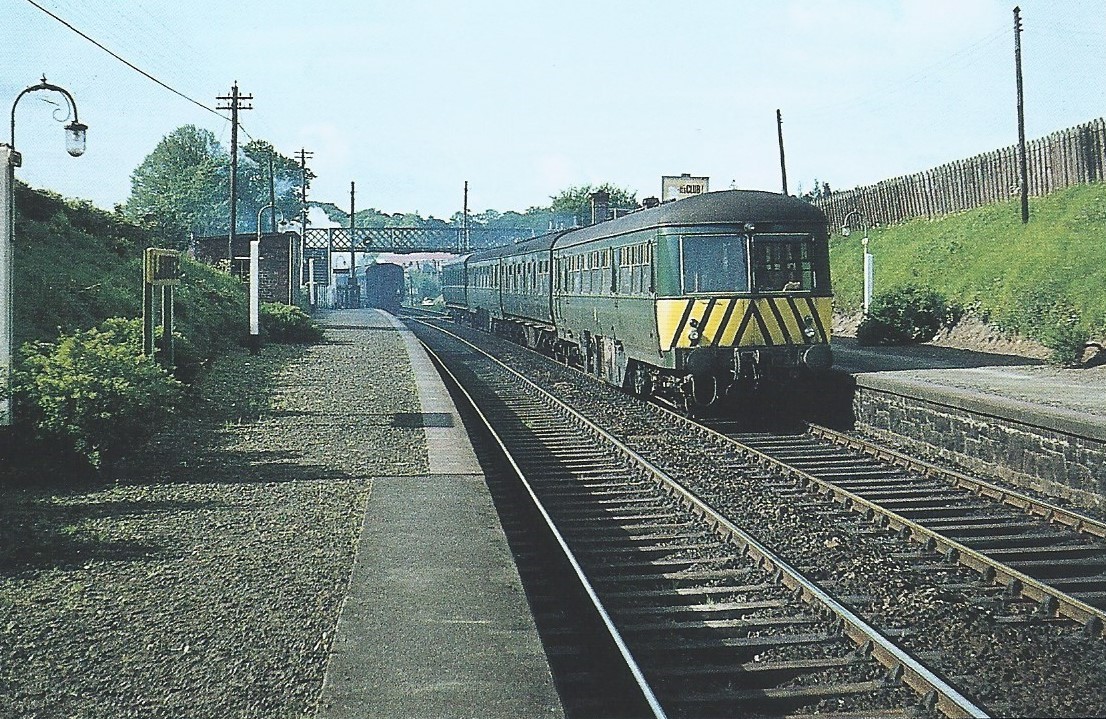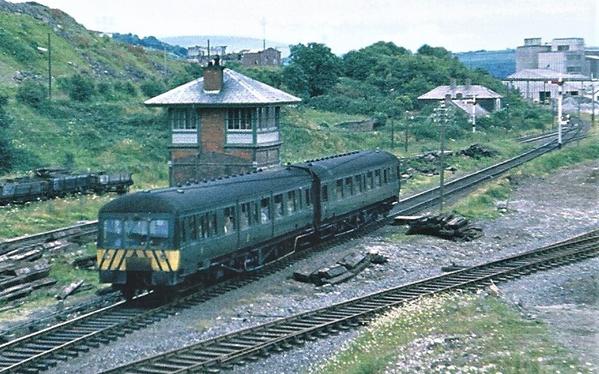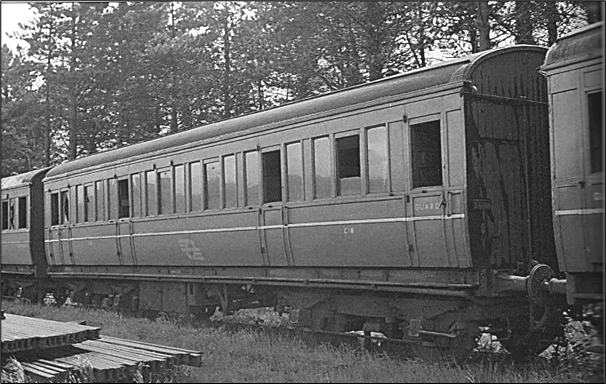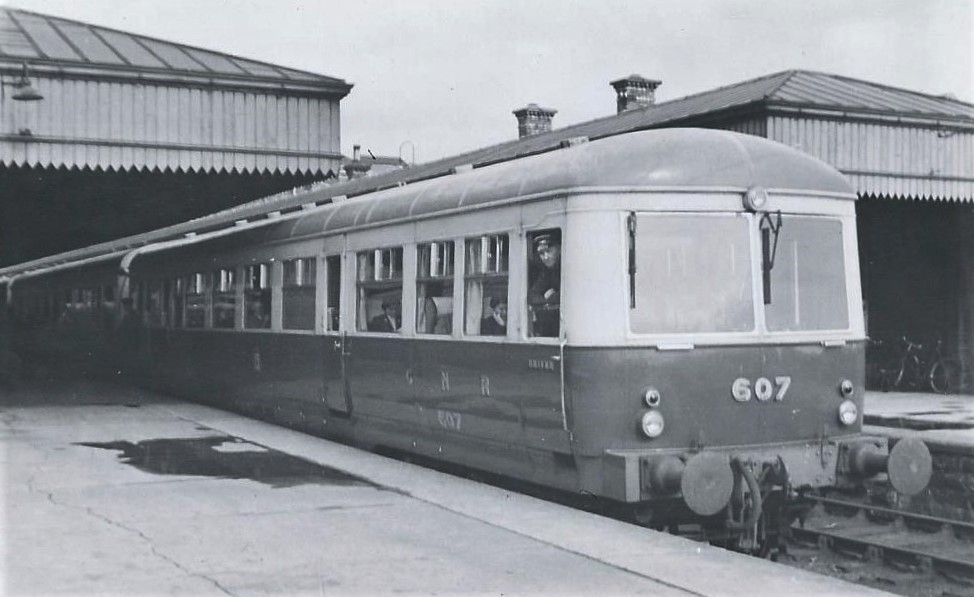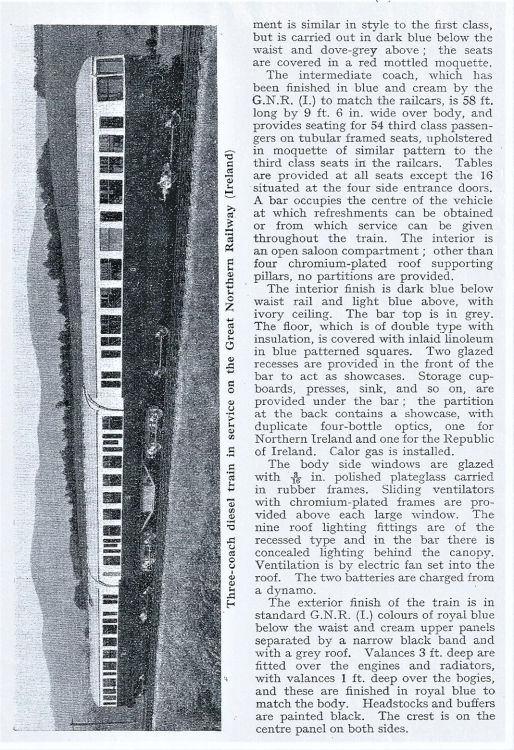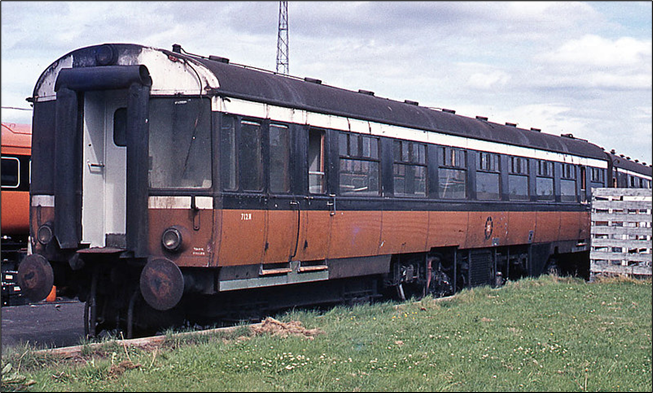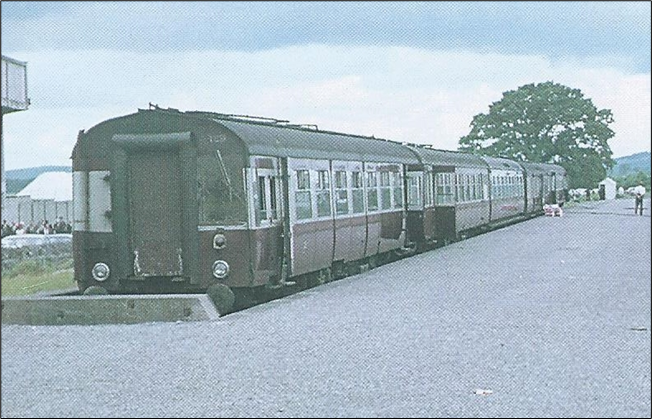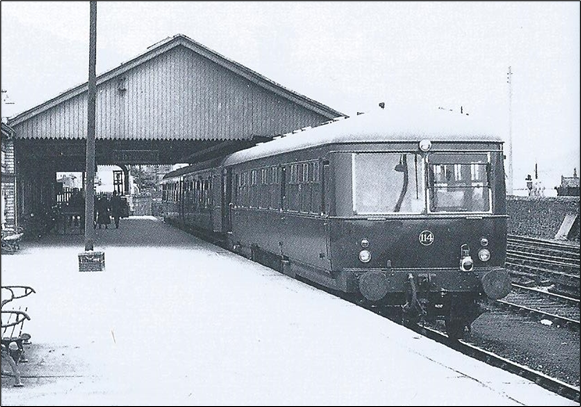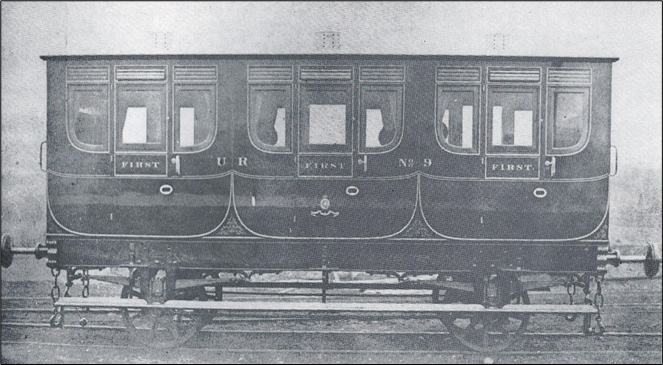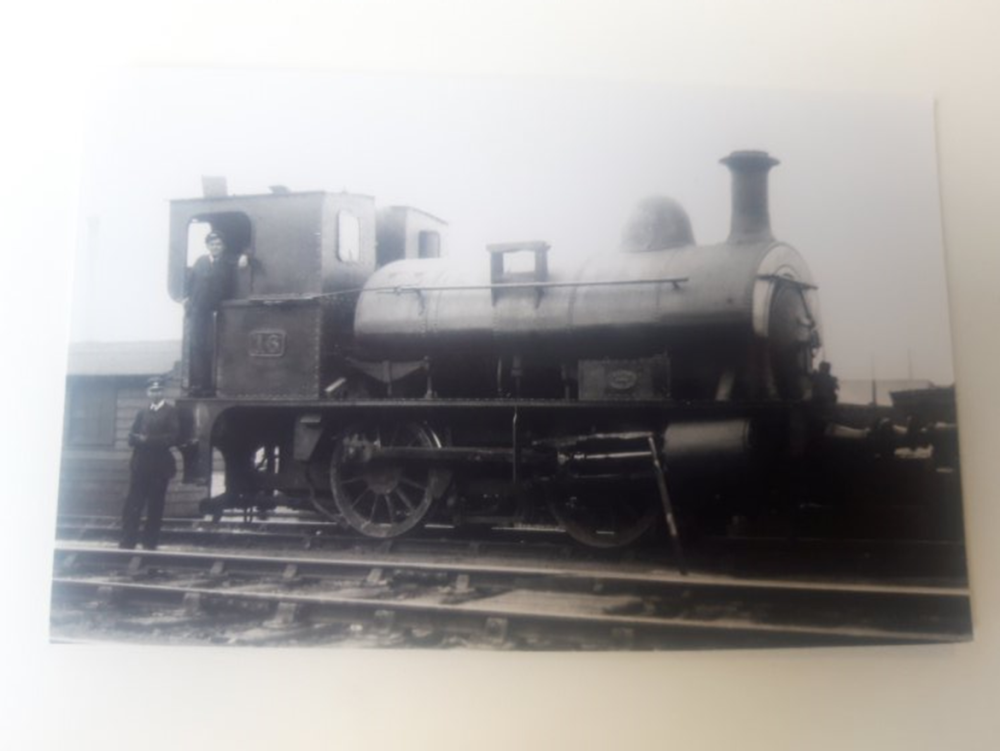-
Posts
433 -
Joined
-
Last visited
-
Days Won
3
Content Type
Profiles
Forums
Events
Gallery
Blogs
Store
Community Map
Everything posted by Lambeg man
-
.thumb.jpg.619b7e43fcb01ddf7c110aacc1ea31d3.jpg)
The Scarva branch Railcar trailer vehicle
Lambeg man replied to Lambeg man's question in Questions & Answers
Hi JHB, it was clearly intended to be towed by either Railcar A or B which took over the Scarva branch services from 1935 on. They could shuttle between Banbridge and Scarva (no turntable) whereas a Railbus had to run to Goraghwood to turn. For the present I am going with this. Have spent the morning trawling the internet for information about Kerr Stuart railmotors. Can not find ANY direct link to Ireland. They did provide a 3' guage diesel loco to the C&VBT as you pointed out and Glover was involved. Before it was returned to K S, Henry Forbes broached Glover about buying it for the CDR but was advised against doing so. Now Forbes was always on the lookout for good second hand equipment. Did he spot a redundant KS product (say the chassis), or perhaps a cancelled order. KS in the past had built 5' 3" products for export to Australia. Did he then alert Glover to a "bargain"? I am guessing only a KS chassis was bought as the bodywork on this coach is pure GN, except for the length. But then why build it in 1936 in a style that that had not been used for 4 years. I also go with this. By 1935 the GN decides it needs a trailer vehicle a Railcar can pull, it has a second hand (if short) chassis sitting in the yard and can therefore they build a coach weighing only 22 tons. Perhaps the unusual length was because it originally had a hollow locomotive section fitted at one end of the whole chassis which was removed? -
.thumb.jpg.619b7e43fcb01ddf7c110aacc1ea31d3.jpg)
Ernies Massive Irish 1930's to 2005 Photo Archive
Lambeg man replied to Glenderg's topic in Photos & Videos of the Prototype
With acknowledgement to Colourpoint books - Note the two buildings and starter signal on the right of the picture compared with Ernie's photo -
.thumb.jpg.619b7e43fcb01ddf7c110aacc1ea31d3.jpg)
The Scarva branch Railcar trailer vehicle
Lambeg man replied to Lambeg man's question in Questions & Answers
Many thanks for that Galteemore. I never knew of that link. You have certainly given me an avenue for exploration. When built it was classified as an All Third and it appears the brake facility was added in 1943. Had it had the brake compartment when built it should have been classified as an 'L'. So the end compartment that became the Guard's MAY have been a driving compartment IF and WHEN it was a Railmotor. Off with my shovel to do more digging. LM -
.thumb.jpg.619b7e43fcb01ddf7c110aacc1ea31d3.jpg)
Ernies Massive Irish 1930's to 2005 Photo Archive
Lambeg man replied to Glenderg's topic in Photos & Videos of the Prototype
Agree, it is Magheramorne. -
Here's another conundrum I've struggled with for years. In 2015 I received a copy from the IRRS of the drawing for the single classification K 19 carriage. Sources have stated it was built for service on the Scarva-Banbridge branch as; a) a Railcar Trailer when traffic demanded and b) as a locomotive hauled coach to cover any Railcar failure. Apart from the fact it was built in 1936 with a wooden paneled body, a year after the GNR began building new 'All Steel' carriages of classifications F 16 and K 15 (the last previous wooden paneled vehicles having been produced in 1932), there is a note on the drawing that is of interest. Written on the drawing is the following "KERR STUART CONVERSION" The firm of Kerr Stuart were locomotive builders, not coach builders. Another point is that the 43' 6" body length was unique in respect of other GNR built carriages. The body paneling APPEARS to be GNR standard as seen in the Des Coakham photo below (with acknowledgement to Midland Publishing). So my question is if anyone could shed more light on why the drawing has the remark "KERR STUART CONVERSION" written on it?
-
.thumb.jpg.619b7e43fcb01ddf7c110aacc1ea31d3.jpg)
Great Northern Railway - Ireland / AEC built Railcars
Lambeg man replied to Lambeg man's question in Questions & Answers
Thank you David, yes I agree. It was late at night and I was tired when I posted the question. "They were the first 'fleet' of identical Railcars in Ireland" is the correct statement. -
.thumb.jpg.619b7e43fcb01ddf7c110aacc1ea31d3.jpg)
Great Northern Railway - Ireland / AEC built Railcars
Lambeg man replied to Lambeg man's question in Questions & Answers
Question answered. The GWR had a "fleet" (albit small) of identical Railcars that pre-dated the GNR ones. -
.thumb.jpg.619b7e43fcb01ddf7c110aacc1ea31d3.jpg)
Great Northern Railway - Ireland / AEC built Railcars
Lambeg man posted a question in Questions & Answers
Following on from the thread I recently activated on the above subject, I have in mind to produce a booklet intended to raise some funds for the RPSI "No. 171 Appeal". The GNR 'AEC' Railcars were the 'trains' of my schoolboy years and I suspect of many older members of this forum. A lot of fresh information has recently been placed on the IRM thread and I myself have a good store of documentation relating to the their building. While I may yet come back to this forum with further questions, may I ask if anyone knows that they were the first "fleet" of identical Railcars in the World? If I made that statement would I be wrong? They certainly were the first "fleet" vehicles in the British Isles. -
We were on our Nile cruise boat in 2000 and my wife standing by the edge of the boat looking at the water. She then turned to me and said "No wonder everyone is ill, I've just watched them washing the plates from breakfast in the river water". "No surprise." says I as the water was VERY brown. A few minutes later she turns to me again and says "Do you know a dead donkey has just floated past?" "No." says I. "But if you hum it I'll give it a go." BOOM BOOM!
-
Hi, what is the source of your models? Kits? LM
-
Dealing purely with the ex-GNR Railcars - 1. GNR Blue/White (with variations where they put the running number) 2. UTA all over green 3. UTA green with 'Wasp' warning panels 4. UTA 'Regional' (GN section) Blue/Cream (Suburban version) 5. UTA 'Regional' (GN section) Blue/Cream (Express version) 6. NIR Maroon/Grey 7. NIR All over maroon when altered to Parcel Trailers 8. CIE 'new' green 9. CIE Black & Orange And that's my answer!!!
-
This drawing is from AEC Park Royal's manual for the Railcars. However it will be seen that the window corners are incorrectly shown as curved, where in fact photo's elsewhere in the manual of the Railcars under construction, show the window corners to be (in GNR fashion) square. The same occurred with the drawings for the BUT Railcars . Also the edges of the front buffer beam are shown angled inwards, whereas on the Railcars it is more square as seen in the following photo (photographer unknown)
-
-
EDITED - Correction to original post. They DID have exhaust silencers fitted.
-
Jonathan Allen photo of one of the refurbished '700' BUT Railcars that went to CIE. Note the absence of roof level exhaust. Barry Carse photo of an NIR (ex-UTA) BUT Railcar showing the UTA fitted exhaust pipe on the left hand side. So I think it is fair play to say that CIE never fitted roof exhausts to their Railcars. One more in respect of livery variations. A Frank Church photo of a UTA (ex-GNR) AEC Railcar in full UTA green livery JUST BEFORE the 'Wasp' warning panels were applied in 1961. Note how the running number has been restored to the front panel as per GNR practice... (and with a light grey roof Jon!)
-
All AEC & BUT Railcars (as built) exhausted at ground level. The UTA to their credit began fitting roof level exhausts to their AEC and BUT Railcars around 1961/62. On the full width cab Railcars the two exhausts came up at the back either side of the corridor connection. With the half cab BUT's, a single (boxed in ) exhaust came up on the opposite side from the cab at both ends.
-
.thumb.jpg.619b7e43fcb01ddf7c110aacc1ea31d3.jpg)
Two Axel Coaches in Ireland?
Lambeg man replied to Auto-Train Original's topic in Photos & Videos of the Prototype
An Ulster 1st class 4-wheeler courtesy of the IRRS Journal. Given that photography was in its infancy, this was probably taken about 1860 ish. -
-
.thumb.jpg.619b7e43fcb01ddf7c110aacc1ea31d3.jpg)
Ernies Massive Irish 1930's to 2005 Photo Archive
Lambeg man replied to Glenderg's topic in Photos & Videos of the Prototype
I should add that the locomotive is ex-GNR 'T 2', UTA No. 5X on station pilot duty. -
.thumb.jpg.619b7e43fcb01ddf7c110aacc1ea31d3.jpg)
Ernies Massive Irish 1930's to 2005 Photo Archive
Lambeg man replied to Glenderg's topic in Photos & Videos of the Prototype
Fitted ventilated van given the coaching stock classification 'Y 9' by the GNR. First built 1881 and numbered initially in the goods vehicle series, in 1924 they were renumbered in the coaching fitted vans '700' series, their numbers running through into the '800's as per the one seen above at Manorhamilton. A significant number were rebuilt in the 1944-46 period. Originally fitted with roof ventilators, these were removed from some (though clearly not all as again the above photo) to allow passage through the Queens Bridge subway in Belfast. It appears the UTA added a '6' to their GNR numbers. -
.thumb.jpg.619b7e43fcb01ddf7c110aacc1ea31d3.jpg)
British locos and stock that can be disguised as Irish
Lambeg man replied to Westcorkrailway's topic in Irish Models
Now, the GNR was still running six-wheelers in occasional services up until 1948/49. Having then scrapped all their own built "in house" indigenous passenger carriages, in 1951 they bought a small quantity of ex-DNGR six-wheelers, Wolverton built and clearly sturdy vehicles, which ran in excursion trains up until about 1955/56. These vehicles retained their 'plum & cream' DNGR' (former LNWR livery) with new GNR running numbers. Having studied the pictures of the Hattons' models from their first introduction, I personally think that with their 'generic' Brexitland profile they could be easily repainted to represent DNGR vehicles. I have considered the Hatton's products for my own GNR interests, but I'm not doing pre-1960. So endeth my tombe..... -
PLEASE! If anyone else has any other photo's taken on the day, please post them up on here... PLEASE!!!
-
.thumb.jpg.619b7e43fcb01ddf7c110aacc1ea31d3.jpg)
Ernies Massive Irish 1930's to 2005 Photo Archive
Lambeg man replied to Glenderg's topic in Photos & Videos of the Prototype
Yes I too had a crack at doing Warrenpoint back about 1982 after reading the second Mac Arnold GNR book. I recall get getting into a complete mess by trying to model the actual dock sidings by putting Polyfilla in between the rails of my track. Chunky Triang wheels could not cope! I have a very loose connection with Warrenpoint in that our next door neighbour in 1960's Lambeg was one Jim Walker. I was delighted when he informed me that his dad was the signalman at Warrenpoint up until the closure. Lo and behold a T.V. programme rocks up last year (might have been the Rob Bell one) and they discuss Warrenpoint. I immediately turned to my wife and said "our old next door neighbour in Lambeg's dad was the signalman there", whereupon Jim Walker's sister appears in the programme to talk about their dad's time at Warrenpoint. Small auld world. -
.thumb.jpg.619b7e43fcb01ddf7c110aacc1ea31d3.jpg)
Date for the last GNR Steam operated 'Enterprise'?
Lambeg man posted a question in Questions & Answers
There was a question in the latest RPSI circular asking for the date when the last steam operated 'Enterprise' ran. In the last IRRS Journal (No. 208) Barry Carse stated the last regular steam operated 'Enterprise' ran on Tuesday 18th June as the new BUT set took over operations the next day. HOWEVER, on page 24 of the book "GNR in Colour" there are two E. Russell photo's taken at Strabane on Saturday 2nd August 1957 showing carriages within a BUT set working from Derry to Belfast. Both the carriages were in the normal BUT 'Enterprise' set at that time. The K 15 even has a Belfast - Dublin roof board. If this was the regular 'Enterprise' set at Strabane, then the 18th June 1957 was NOT the last time the 'Enterprise' was steam operated. In his book Conrad Natzio mentions that on summer Sundays, to provide a ten coach train, steam replaced the BUT set. Would I be correct in assuming that this is in fact the Belfast based BUT set that normally worked the 'Enterprise', but that as it is a summer Saturday a ten coach (the BUT sets were limited to eight cars) steam substitution is working the 'Enterprise' on this date?
.png.c363cdf5c3fb7955cd92a55eb6dbbae0.png)
